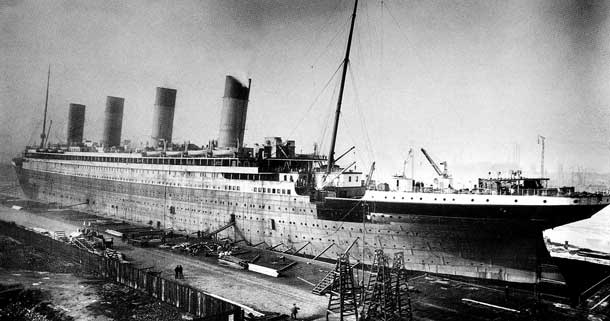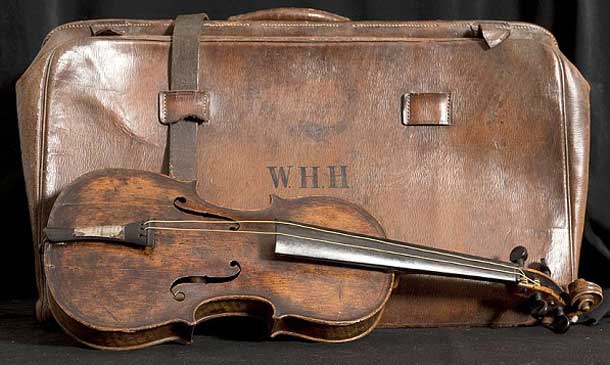THUNDER BAY – The Royal Mail Ship Titanic has a legacy as the end of an era. It is a story that has never aged. The romance, the tragedy, and end of the age of seeming innocence brought about by the sinking of the RMS Titanic, on its maiden voyage is a story that has never grown old.
It has been one hundred and ten years since the RMS Titanic’s ill-fated maiden voyage began.

On April 10th, to great fanfare, the RMS Titanic under the command of The Titanic was under the command of Captain Edward Smith, one of White Star Line’s most experienced captains, set sail on her fateful journey.
The story has been told in print, in film and has come to put a measure of the end of the era of optimism for its time.
The RMS Titanic left port as a ship of dreams. only a few short days later, that journey turned into a horrible nightmare.
The RMS Titanic was a White Star Line passenger liner.
The ship sank in the North Atlantic Ocean in the early morning hours of 15 April 1912.
The story of the Titanic ramming an iceberg during her maiden voyage is well known.
The sinking has been documented in film, in movies, stories and still after 100 years, the epic story still captures millions.
Today, the word Titanic is associated with the arrogance of man, believing that the ship, which was called unsinkable but went to the bottom of the North Atlantic in only a few hours.
The Titanic was bound from Southampton, UK to New York City, US.
The sinking resulted in the loss of more than 1,500 passengers and crew making it one of the deadliest commercial peacetime maritime disasters in modern history. The cream of society, and some of the world’s richest men died in the sinking.
As well there were hundreds of emigrants from Great Britain and Ireland, Scandinavia and elsewhere throughout Europe seeking a new life in North America. Steerage class was filled with people headed to America to start new lives.
The RMS Titanic was the largest ship afloat at the time it entered service. It was the second of three Olympic class ocean liners operated by the White Star Line. All three of those Olympic class liners met their fates in less than kind ways.
Those ships were built by the Harland and Wolff shipyard in Belfast. Thomas Andrews was the ship’s naval architect. Andrews was among those lost in the sinking.
On her maiden voyage, Titanic carried 2,224 passengers and crew.
The Titanic’s passenger list read like a ‘Who’s Who’ of people in the First Class cabins.
A wireless telegraph was provided for the convenience of passengers as well as for operational use.
Wikipedia reports, “Although Titanic had advanced safety features such as watertight compartments and remotely activated watertight doors, there were not enough lifeboats to accommodate all of those aboard due to outdated maritime safety regulations. Titanic only carried enough lifeboats for 1,178 people—slightly more than half of the number on board, and one-third her total capacity.
“After leaving Southampton on 10 April 1912, Titanic called at Cherbourg in France and Queenstown (now Cobh) in Ireland before heading west to New York. On 14 April 1912, four days into the crossing and about 375 miles (600 km) south of Newfoundland, she hit an iceberg at 11:40 pm ship’s time. The collision caused the ship’s hull plates to buckle inwards along her starboard side and opened five of her sixteen watertight compartments to the sea; the ship gradually filled with water.
“Meanwhile, passengers and some crew members were evacuated in lifeboats, many of which were launched only partly loaded. A disproportionate number of men were left aboard because of a “women and children first” protocol followed by some of the officers loading the lifeboats. By 2:20 a.m.am, Titanic broke apart and foundered with well over one thousand people still aboard.
Just under two hours after Titanic foundered, the Cunard liner RMS Carpathia arrived on the scene of the sinking, where she brought aboard an estimated 705 survivors.
“The disaster was greeted with worldwide shock and outrage at the huge loss of life and the regulatory and operational failures that had led to it. Public inquiries in Britain and the United States led to major improvements in maritime safety. One of their most important legacies was the establishment in 1914 of the International Convention for the Safety of Life at Sea (SOLAS), which still governs maritime safety today. Additionally, several new wireless regulations were passed around the world in an effort to learn from the many missteps in wireless communications—which could have saved many more passengers.”





